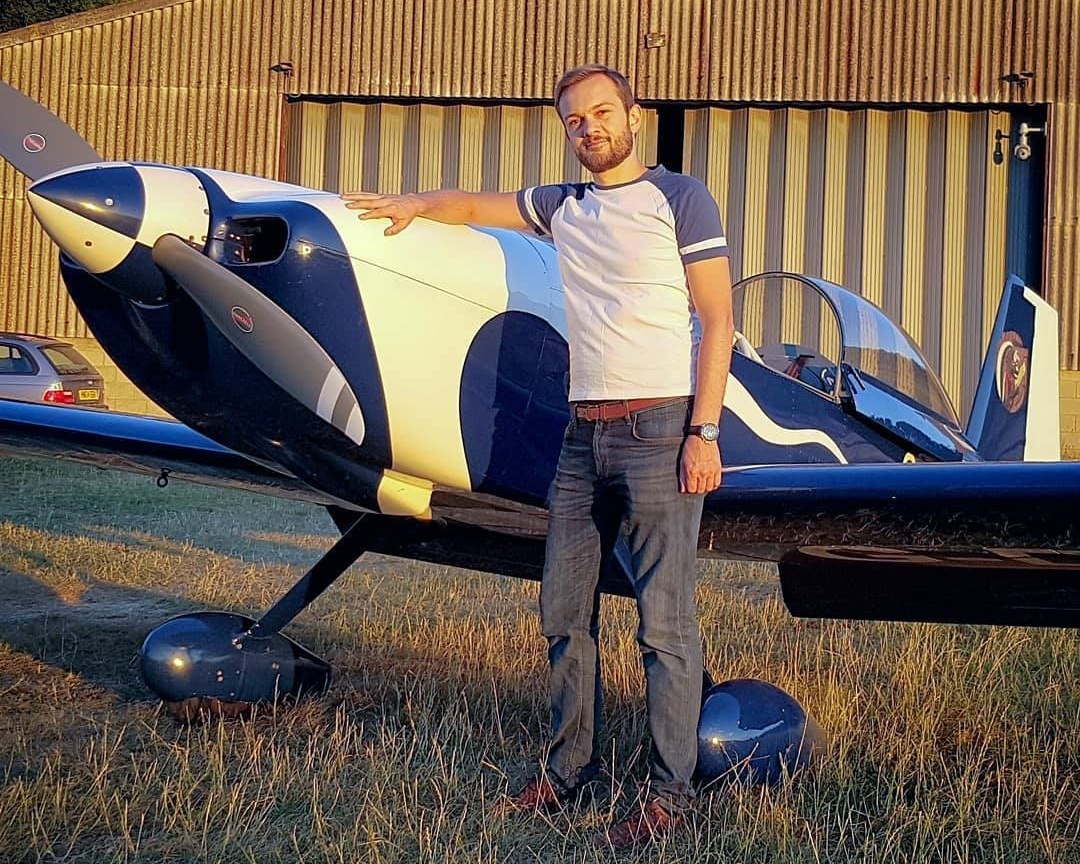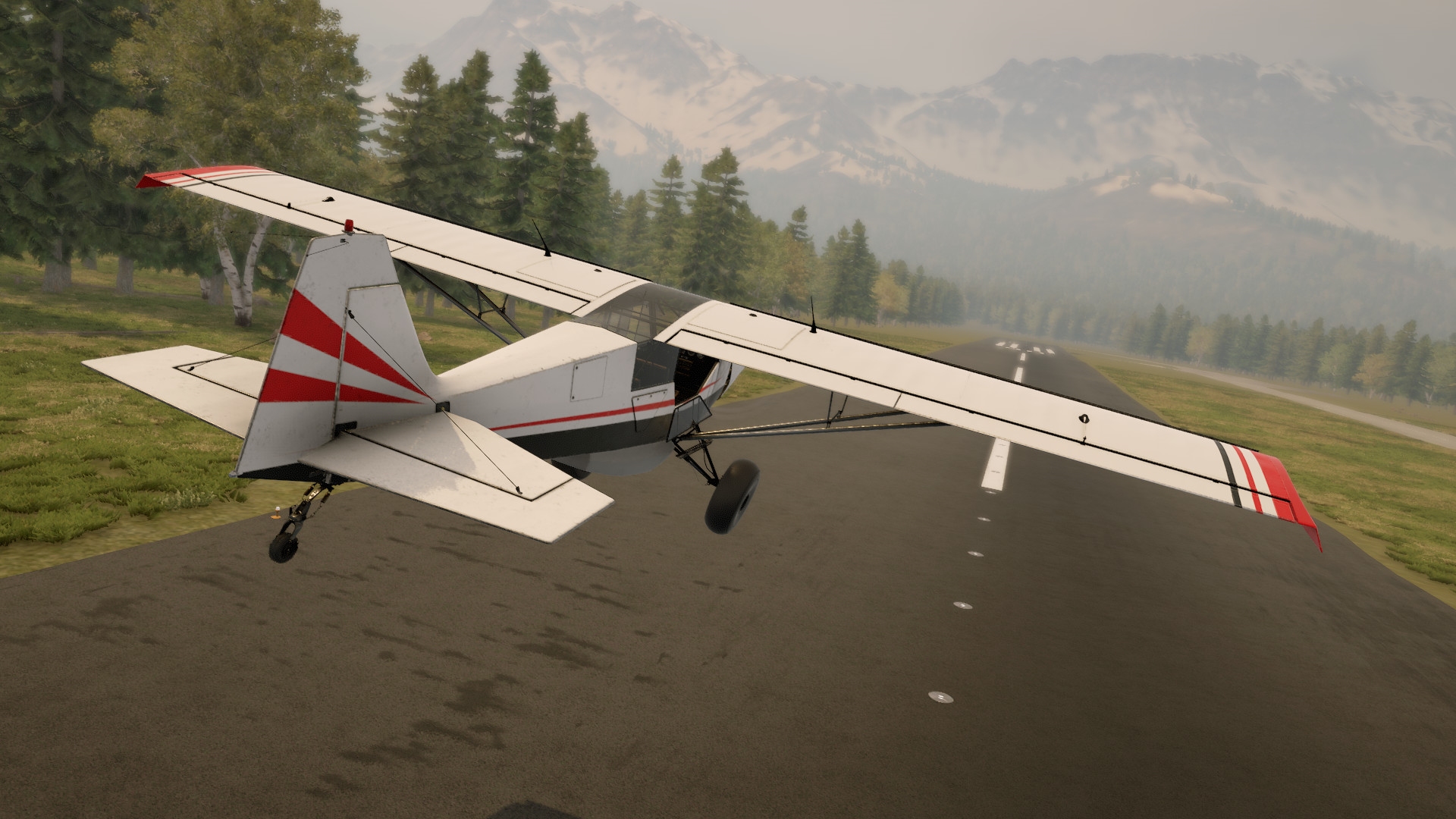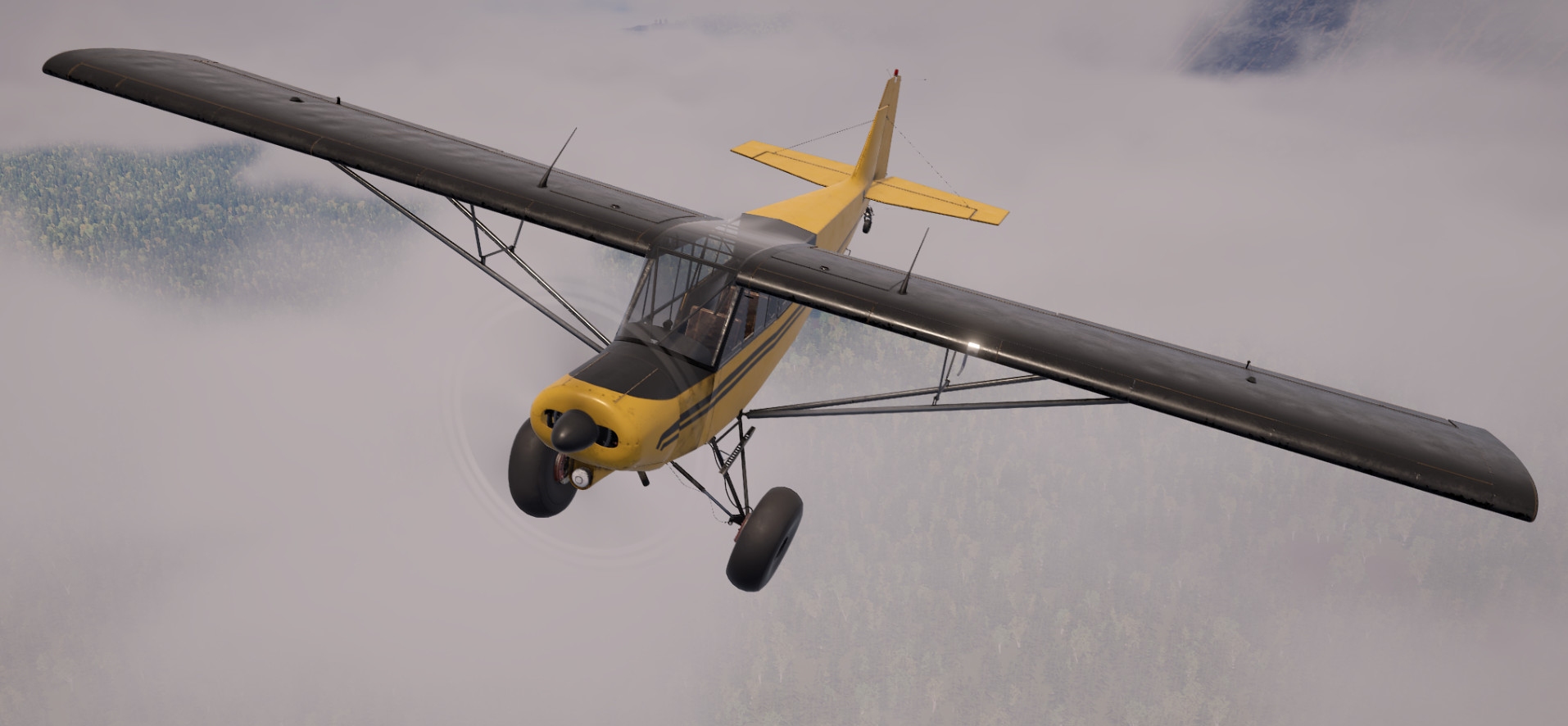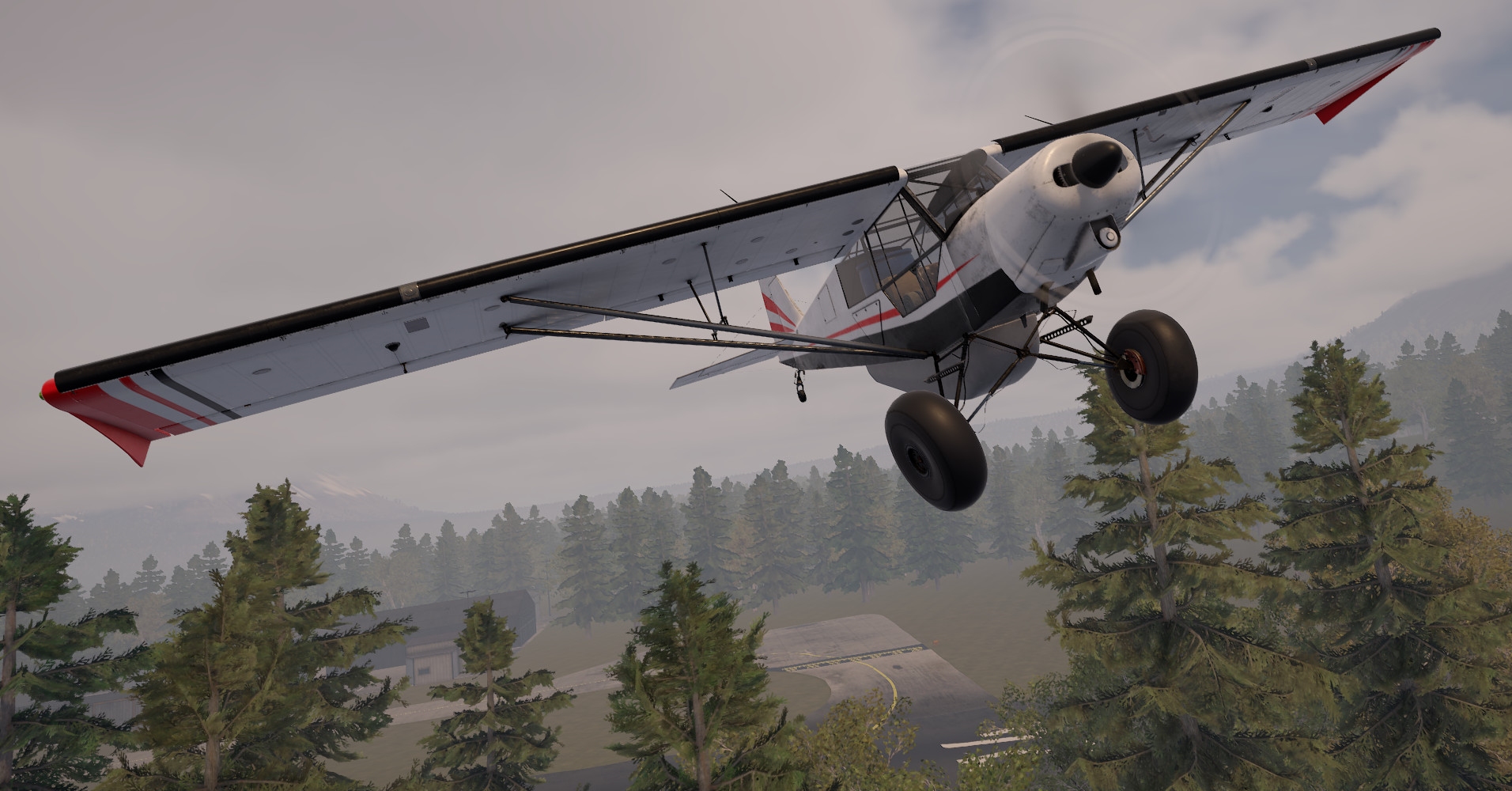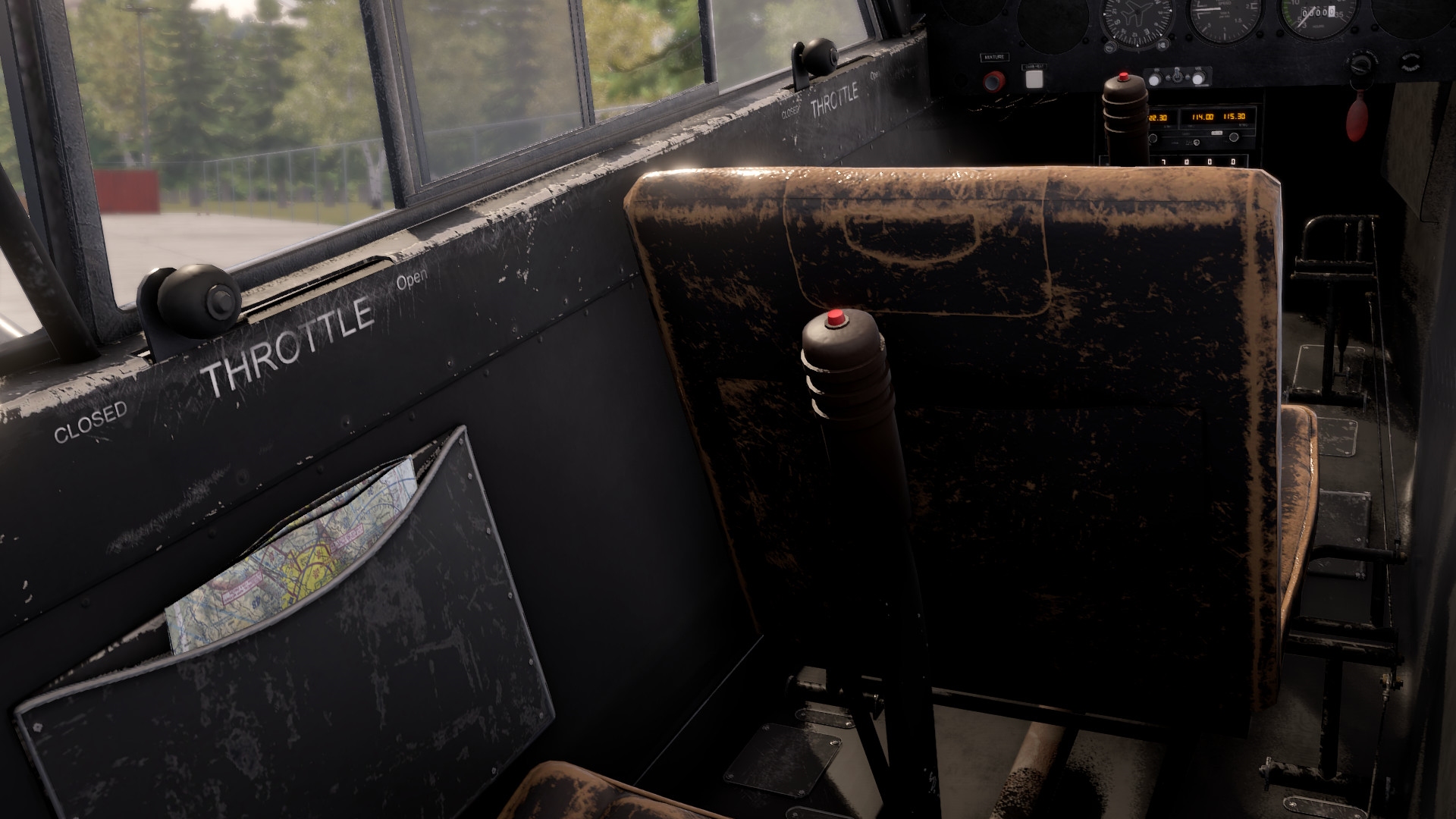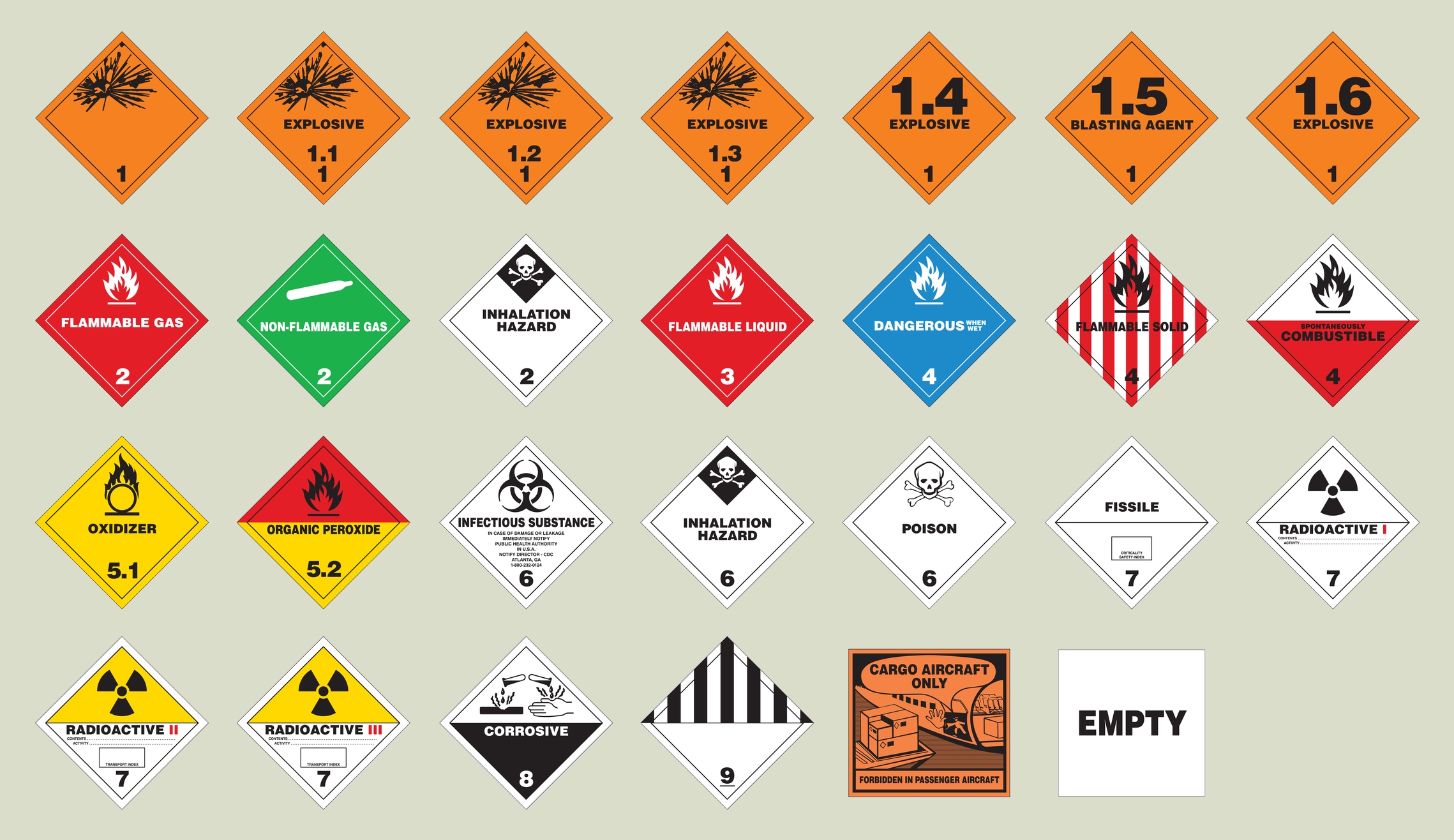The Flare Path: Devoted to Deadstick
REMEX's Chris Cheetham quizzed
In REMEX's upcoming gunless flight sim, airliners won't be rare, they'll be non-existent. Dedicated to reproducing the kind of thrilling low-tech aviation in which runways tend to be surrounded by timber and rocks rather than turf and signage, and bear rage is more likely to delay a flight than air rage, the commerce-laced Deadstick is the brainchild of a Brit called Chris Cheetham. Having done his stint at the coding coalface (Harry Potter and the Order of the Phoenix, Harry Potter and the Half-Blood Prince, Trivial Pursuit, Little Big Planet, Little Big Planet 2, Killzone HD, The Room...) Chris broke away, formed a studio, and embarked on something far more personal. Yesterday I persuaded him to take a break from physics tweaking and economy balancing and talk about that project and its origins.
RPS: Is your knowledge of flight and flying machines purely theoretical?
Chris: I have been drawn to aircraft/flying as far back as I can remember. This interest solidified at the age of 10 upon receiving Microsoft Flight Simulator 95 as a birthday present - I was instantly hooked. Fast-forward another 11 years and countless thousands of virtual flying hours later I had just got my first proper job in the games industry and was just about able to scrape and save enough money to pursue flying lessons. In 2009 after 60 or so hours flying I finally achieved my private pilot licence and I have been flying regularly ever since. Lately my focus has been tailwheel flying - something that forms a huge part of the experience in Deadstick - and aerobatics. Recently I entered my first aerobatics competition.
RPS: While at EA, Supermassive, and Fireproof were there any opportunities to combine your interest in flight with your daily coding duties? Broomstick physics in the Harry Potter games, perhaps?
Chris: I’m proud to say that, yes, I have worked on broomstick physics – although the flight dynamics were somewhat different! I was also working towards my first solo at the time so have very fond memories of the two. Funnily enough it’s not broomsticks but rather working on the The Room whilst at Fireproof to which I must attribute the most inspiration for Deadstick. The tactile nature of interactions and the physical manner in which objects are manipulated really inspired me to try the same with UnityFS [A 'flight sim toolkit' for Unity users]. It certainly made me question what it would feel like to be able to get out of the aircraft and perform a true walk-around, interacting with all of the surfaces as you go. Funnily enough, by far the most common positive feedback we get from Deadstick during playtests is not the flight model, nor the damage, nor the graphics or missions – but rather the little keyring in the cockpit that players can see dangling and reacting dynamically to their flying. (Something you'd very much find in The Room!)
RPS: So when you sat down to code UnityFS, was Deadstick in the back of your mind?
Chris: Not at all, UnityFS was very much created as a hobby project for myself to combine my passions of game development – particularly gameplay/physics programming and my love of flying. The hope was that in doing so it would improve my understanding of the dynamics of flight. Releasing UnityFS as an asset other developers could use was really just a means for me to give myself an end goal and actually finish it. Given how niche flight simulators are I certainly had no expectations that anyone would purchase it. To my surprise however a number of developers did and after gaining quite a bit of popularity I was contacted by a racing team who asked me to build them an in-house simulator that their team could train on. This was the stepping stone that allowed me to set up REMEX. Even then Deadstick was never really a plan but formed somewhat organically from a number of prototypes/experiments that were created during any downtime we had on the racing project.
RPS: What's going on in the REMEX office at this precise moment?
Chris: Our current focus is on balancing player progression and populating our world. We set ourselves the immense challenge of not using any aerial images in the game, instead opting to model all elements of the environment to really create a fun and immersive landscape to explore whilst flying low and slow. In order to achieve this we have had to develop a number of bespoke in-house procedural generations system that we can use to place every tree and blade of grass within our world. After months and months of experimentation and development those systems are in and working well and we are now busy focusing on sculpting all of the man-made elements and balancing the economy as players progress through the game.
RPS: Can you see the light at the end of the developmental wind tunnel yet?
Chris: We’re very much in finalling mode now and working hard to polish, balance and lock-down our existing features ready for initial Early Access release. We were recently reviewing some of the early Deadstick prototypes and concept work and were shocked to see it span back as far as 2016! It has been a long time coming, but we’re really excited to soon be sharing our creation with virtual bush pilots around the world.
RPS: How subtle is Deadstick's flight physics? Will, for instance, flying with outsized tyres and an open window impact handling?
Chris: The flight model is my pride and joy – I’m both immensely proud of what we have achieved so far but simultaneously am kept awake at night thinking of all the little things we can do to make it better. (You’ll be pleased to know windows affecting handling has now been added to that list!) To that end I don’t think that the flight model will ever be truly finished as there are always new ways in which we can tweak/improve it. The challenge is trying to pick the right battles and focus on the elements that will contribute most to the experience. The flight model has always come first however, and whilst we’re making a game we certainly don’t want to dumb down the simulation aspects. Instead we’ve tried to pick aircraft that are forgiving enough that a new player can just turn the mags and firewall the throttle paying attention to little else – whilst more experienced players can lean for better fuel consumption to really get the most out of the aircraft.
Our focus so far has been the core elements of the model, but there are a number of subtleties in there which are being simulated. Weight and balance, for instance is very important and must be closely considered when loading cargo. Players must be careful where they place items to ensure that the aircraft’s center of gravity is kept within limits. More subtly however just how much fuel is in each tank will affect how the aircraft performs. Run one tank slightly more than the other and you will create an imbalance. Notice the aircraft has a tendency to keep rolling in one direction whilst you are trying to fly in a straight line? It’s probably time to change tanks!
RPS: You've mentioned elsewhere that a New Guinea-inspired map might follow the Alaskan one. Is your FM and weather engine ready for monsoons and high-humidity aviation?
Chris: One thing we’ve really tried to focus on is making sure that all of the fundamental elements of the flight model are simulated correctly. This has caused no end of headaches up front but the beauty of such an approach is that if you simulate these behaviours correctly at a core level then many of the more complex and emergent scenarios that arise just work. One example I think back to in early development is the aircraft’s pitot static system which uses air pressure through two ports to derive airspeed and altitude. Rather than simply look at the aircraft’s coordinates and set its altimeter dial accordingly based on height we accurately simulate these pressures and derive the result. One day I was convinced I had discovered a bug, noting that my airspeed indicator was broken increasing only when I climbed and decreasing when I descended much like an altimeter, only to discover that I had accidentally blocked both ports producing exactly the result that could be expected in real life. We’ve taken a similar approach with the environment's atmosphere which the aircraft (and pitot static system) are fully aware of. This means effects of humidity, density altitude etc will (in theory) ‘just work’.
RPS: Do you sim soggy strips and water-assisted landings?
Chris: Absolutely, in Deadstick we’re really keen to show players just what these aircraft are capable of and encourage them to explore off-airport flying. When starting out in Deadstick players will be very much at home on familiar asphalt runways spanning several kilometers in length providing a safe haven for even the most inexperienced pilots. As they progress however shorter airports can be braved offering more interesting jobs and lower costs. A large aspect of this and one feature we haven’t talked about in great detail yet is discovery. Starting out, new players will have their chart featuring all airfields across the island. For traditional pilots these pieces of tarmac alone would be enough, however for our intrepid bush pilots there are a number of prime off-airport landing locations all around the map which can be discovered and to which players can then deliver more cargo and make more money. Bush flying is all about the uncharted - using improvised strips and the environment to your advantage. We are really trying to capture that with the discovery system and off-airport flying.
RPS: How will Deadstick pilots pass the time when the weather's too bad for flight?
Chris: We had considered forcing pilots to twiddle their thumbs. However we felt that may be being a little too unkind so instead we do give the player the option to skip forward in time. This does come with a cost however as any days skipped are days when money is not being earned and bills are going to stack up. This is a reality of real-world flying, and sadly such commercial pressures can lead to accidents when a pilot has pushed on in weather entirely inappropriate for flight in order to meet a deadline. This is now focused on heavily during flying training with an entire written exam dedicated to the psychology of flying – human performance and limitations. We also feature a salvage mechanic within Deadstick allowing the player to return an aircraft to the nearest maintenance facility (at a cost) if they've sustained damage and don’t fancy flying on.
RPS: Is conifer contact always destructive/fatal or will we be able to brush boughs and get away with it?
Chris: We’ve worked hard to build a dynamic damage model that will accurately reflect the crashes inflicted by the pilot. We really want the player to know that every bump and scrape they see, isn’t simply the result of swapping from an undamaged to a damaged model, but rather they have actually caused that unique damage themselves and now have to either repair it or brave flying on and risk structural failure.
RPS: Why should I care about my in-game 'reputation', and what can I do to repair it if things go wrong?
Chris: Reputation has been through several design iterations and is something we really want to play an important role whilst forging your bush pilot career in Deadstick. Initially the concept was to have a single ‘global’ reputation which would go up and down based on the success/failure of your cargo delivery duties. This global reputation would then in turn determine the types of jobs available to you as a pilot.
After several hours of flight testing however it became apparent that this isn’t really reflective of the real world and we really wanted something much more subtle/granular. Reputation is now split into several dimensions, and unlike the initial incarnation there is no ‘global’ reputation, instead every airport in the game has their own impression of your flying abilities and, if you’ve not visited before they aren’t going to know about you and certainly aren’t likely to offer you jobs. Reputation is also no longer tied simply to job success/failure. Everything you do in the sim will have some impact on how an airport/customers perceive you – making great landings, purchasing fuel, frequently using airfields will all increase your favour. Conversely failed jobs or accidents will ripple through the community and you will quickly find the job market drying up.
The important difference here however is that it is all location specific – if a player crashes in one region they either have the choice of trying to repair their local reputation, or instead venturing to new territories where they were previously unheard of to create a new start.
RPS: Are some cargos more fragile or hazardous than others?
Chris: The types of cargo offered will very much depend on how trusting customers are in your flying abilities. Whilst a new pilot may find themselves frequently ferrying newspapers around the island, as reputation increases more exotic/challenging jobs will be available for greater reward. Fragile and hazardous goods do feature with each type of cargo being aware of the stresses and strains undertaken as you fly. One heavy landing may result in damaged goods and an unhappy customer. An improvised aerobatic routine with dangerous goods on board and the outcome could be much worse! Time-critical jobs are also featured which will require swift piloting and strong navigation abilities to achieve.
RPS: Are branded Maules, Pipers etc. ever likely to appear in Deadstick or is the thought of hefty licencing fees too off-putting?
Chris: We’d love to feature licenced aircraft in the sim – particularly some of the smaller, more quirky bush aircraft. The challenge I suspect will be convincing manufacturers to let us virtually damage/destroy their aircraft long before licence fees become a point of conversation. As damage and wear and tear is such a fundamental part of the experience it’s not something we’d want to compromise on. We’ve therefore made the decision to avoid those conversations altogether for now and focus on building the best experience we can with our own aircraft. Once Deadstick is released and we have something tangible to demonstrate to manufacturers it’s certainly something we will be exploring.
RPS: What's likely to enhance the Deadstick experience more, rudder pedals or VR goggles?
Chris: Without doubt VR. Flight simulators often get a bad rep from flying instructors for teaching pilots bad habits. Part of the problem stems from the limited field of view prevented from a PC monitor and the references it gives you to the outside world. Somewhat unconsciously virtual pilots tend to focus more on flying by instruments rather than looking out of the window. I was also guilty of this and in my early lessons my flying instructor would frequently cover the instrument panel with a piece of paper to force me to look outside! In traditional flight sims there is often a dance between joystick, keyboard and mouse when trying to look out of the side window to judge when to turn the aircraft to align with the runway. We’ve tried to alleviate that a little in Deadstick with our input mapping but VR removes this restriction entirely and creates a level of immersion that is simply unparalleled. Flying into cloud in VR surrounded by mountains only to find your self tumbling towards the ground is genuinely terrifying. Being able to open the window and lean down over the tundra tires and induce vertigo is also a lot of fun!
RPS: Thank you for your time
* * *

